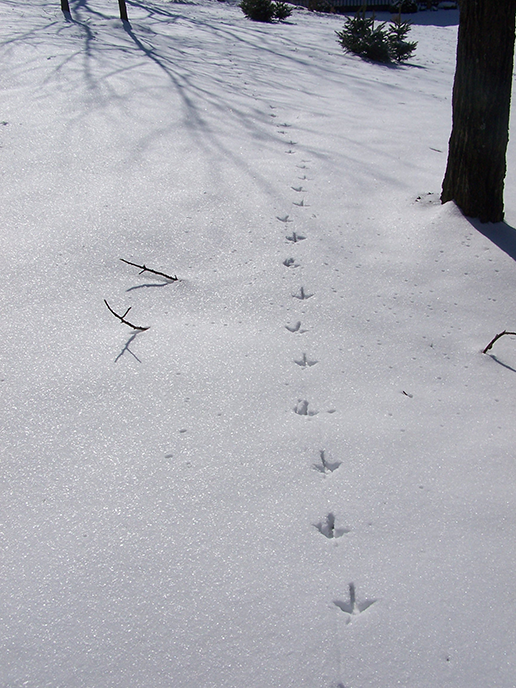Produced for K-12 educators, Teach This Poem features one poem a week from our online poetry collection, accompanied by interdisciplinary resources and activities designed to help teachers quickly and easily bring poetry into the classroom. The series is written by our Educator in Residence, Dr. Madeleine Fuchs Holzer, and is available for free via email.
Featured Poem
Wild Turkey Tracks in the Snow

Classroom Activities
- Warm-up: Ask your students to each think of a silent pose or a gesture that a bird might make. Ask half the class to make their poses or gestures at the same time, while the other students watch and write down what they notice. Repeat this with the other half of the class posing silently as if they were birds.
- Project the image of the photo of bird tracks so all your students can see it. Ask your students to write down what they notice in the photo. If they write something general, like “bird tracks,” ask them to write down what specific details in the image make them think they see bird tracks. What do these bird tracks remind them of, if anything?
- Ask your students to get in small groups and share what they noticed in the poses or gestures and in the images. Ask them to keep a list of the descriptive words that they use during this discussion.
- Project the poem “The Young Poets of Winnipeg” and ask your students to read it silently and write down all the words and phrases that jump out at them. Ask one student to read the poem aloud to the class while the listening students take note of new words and phrases that they think are important. Repeat this process with another student reading aloud.
- Gather your students back into their small groups and ask them to share what jumped out at them in the poem.
- Whole-class discussion: To what does the speaker compare the students in her poem? What evidence do your students have for this comparison? Why do they think Naomi Shihab Nye makes this comparison? Why do they think the speaker talks about bird tracks at the end of her poem?
